Hello! This week we are going to talk about a topic really dear to my heart. I am a true bookworm, and I spend so much time looking for resources and classes to learn, that when I find a good book on a subject, it becomes my best friend. So without any further ado, let’s see the best books to learn Machine Learning for Beginners.
I will try to put them in the best chronological order to read them.
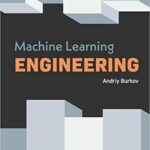
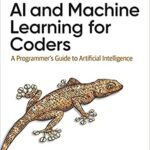
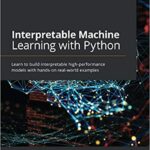
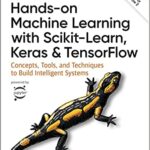
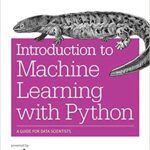
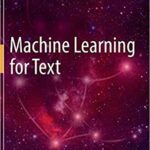
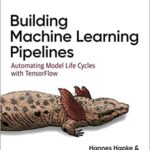

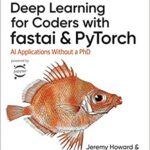
1. The Hundred-Page Machine Learning Book
This is the perfect book for a soft introduction to the topic. It covers all the basics while still going in deep enough for you to truly grasp the most important concepts in Machine Learning. It even dives into quite a bit of math, but don’t worry, it is nicely explained. The book does a great job at easing you into Machine Learning, and in just 100 pages!
Despite its length, it covers all important machine learning techniques, from linear and logistic regression through current support vector machines, deep learning, boosting, and random forests. There is also no shortage of information on the various ways, with the unique companion book wiki providing further information on each strategy. Because the book assumes no advanced mathematical or statistical knowledge or even programming skills, it should be accessible to practically anybody willing to put in the effort to learn about these approaches.
The only thing I wish was explained a bit more is the mathematical notation, because it can be tricky if you are not familiar with it.
You can buy the book here.
2. Introduction to Machine Learning with Python: A Guide for Data Scientists
Among the best books to learn machine learning for beginners, this is a must. When it comes to Data Science, you cannot go wrong with an O’Reilly book. They are usually written by professional that know their subject really well, and have a point they want to come across as clear as possible. This book is no exception.
You’ll learn how to use Python and the Scikit-learn package to develop a successful machine-learning application. Andreas Müller and Sarah Guido’s book focuses on the application of machine learning techniques rather than the mathematics behind them. You’ll get even more out of this book if you’re familiar with the NumPy and Matplotlib packages.
In this book, you’ll learn:
- Machine learning’s fundamental ideas and applications
- The benefits and drawbacks of commonly used machine learning algorithms
- How to portray machine-learned data, including which data features to emphasize
- Advanced model evaluation and parameter tweaking techniques
- Pipelines are a model chaining and workflow encapsulation idea.
- Text-specific processing techniques, as well as methods for working with text data.
- Suggestions for enhancing your data science and machine learning abilities
3. Hands-On Machine Learning with Scikit-learn, Keras, and Tensorflow
Author Aurélien Géron helps you obtain an intuitive knowledge of the principles and tools for constructing intelligent systems by utilizing realistic examples, minimal theory, and two production-ready Python frameworks, Scikit-learn and TensorFlow. Starting with simple linear regression and moving to deep neural networks, you’ll study a variety of strategies. To get started, all you need is programming expertise and the exercises in each chapter to help you apply what you’ve learned.
- Investigate the field of machine learning, particularly neural networks.
- To follow an example machine-learning project from start to finish, use Scikit-learn.
- Support vector machines, decision trees, random forests, and ensemble approaches are some training models to look at.
- To create and train neural networks, use the TensorFlow library.
- Convolutional nets, recurrent networks, and deep reinforcement learning are all examples of neural net designs you’ll learn about.
- Learn how to train and scale deep neural networks.
4. AI and Machine Learning for Coders
This is a great place to start if you want to advance your career from coder to AI specialist. This introductory book, based on Laurence Moroney’s very successful AI classes, takes a hands-on, code-first approach to help you gain confidence while learning fundamental subjects.
For online, mobile, cloud, and embedded runtimes, you’ll learn how to implement the most prevalent situations in machine learning, such as computer vision, natural language processing (NLP), and sequence modeling. The majority of machine learning books start with a scary quantity of sophisticated mathematics. This guide is based on hands-on exercises that allow you to work with the code directly.
Subjects covered include:
- How to use TensorFlow to construct models with talents that companies want
- Working with code examples teaches you the fundamentals of machine learning
- How to put computer vision into practice, including picture feature detection
- How to tokenize and sequence words and phrases using natural language processing
- Model embedding methods for Android and iOS
- How to use TensorFlow Serving to serve models over the web and in the cloud
5. Machine Learning Engineering
This is another book from Andriy Burkov, and it is definitely one of the best books to learn Machine Learning for beginners. Even though I would almost say, this is one of those magic books that bridges the gap between beginner and intermediate data scientist. I say this because it focuses on some real-world aspects of implementing machine learning at scale. Furthermore, it covers the topic of actual application and implementation of Machine Learning, a topic that is often overlook by other books. You will learn all you need to know about building Machine learning models and deploying them into production. The book explains the process of conscious engineering such models and outlines the best practices you need to apply to make Machine Learning work. It is a particularly interesting book if you plan on making a career out of Machine Learning!
You can check the book out here.
6. Building Machine Learning Pipelines: Automating Model Life Cycles with TensorFlow
Yet another O’Reilly book in our list of best books to learn Machine Learning for beginners! Hannes Hapke and Catherine Nelson bring you through the processes of automating a machine learning pipeline using the TensorFlow environment in this practical guide. You’ll discover approaches and tools that will reduce deployment time from days to minutes, allowing you to focus on new model development rather than legacy system maintenance.
Managers will get a better understanding of their role in helping to expedite data science initiatives, while data scientists, machine learning engineers, and DevOps engineers will learn how to move beyond model development to effectively productize their data science projects.
A few things you will get out of this book:
- Learn how to construct a machine learning pipeline.
- TensorFlow Extended components may be used to build your pipeline.
- Use Apache Beam, Apache Airflow, and Kubeflow Pipelines to orchestrate your machine learning workflow.
- Use TensorFlow Data Validation and TensorFlow Transform to work with data.
- TensorFlow Model Analysis allows you to thoroughly examine a model.
- Examine your model’s performance for fairness and bias.
- For mobile devices, use TensorFlow Serving or TensorFlow Lite models.
- Learn how to use machine learning techniques that protect your privacy.
7. Interpretable Machine Learning with Python
This is a Key book if you really want to take your Machine Learning to a professional level. If you want to use machine learning (ML) interpretation to better understand your models and reduce the risks associated with bad predictions, this is the book for you. Thanks to this book, you will be able to work more efficiently with ML models.
The book’s first portion is a beginner’s guide to interpretability, which covers its importance in business as well as its essential characteristics and obstacles. You’ll look at how white-box models function, compare them to black-box and glass-box models, and consider their advantages and disadvantages. The second section will introduce you to a wide range of interpretation methods, also known as Explainable AI (XAI) approaches, and show you how to apply them to various use cases, including classification and regression, tabular, time-series, picture, and text.
In addition to the step-by-step coding, the book also provides examples to help the reader evaluate model results. In the third segment, you’ll practice tweaking models and training data for interpretability by decreasing complexity, minimizing bias, putting guardrails in place, and increasing dependability. The techniques you’ll learn about here include everything from cutting-edge feature selection and dataset debiasing to monotonic restrictions and adversarial retraining.
Once you are through with this book, you’ll have a better understanding of machine learning models and how to improve them through interpretability tuning. If it seems interesting to you, you can buy the book here.
8. Deep Learning for Coders with Fastai and PyTorch: AI Applications Without a PhD
This book is a bit of a bonus. If you read my previous article on resources to learn Deep Learning, you might remember how much I praised the Deep Learning for coders course. It is a true hands-on course, that teaches you important Deep Learning concepts through a magnificent blend of simple explanations and programming. This book is actually the reason why the course came into being. You get all the information, the exercises and the explanations on the course through the videos and the notebooks, but I really loved being able to read it all on paper.
The inventors of fastai, Jeremy Howard and Sylvain Gugger, teach you how to use fastai with PyTorch to train a model for a variety of applications. You’ll also go deeper into deep learning theory to acquire a comprehensive knowledge of the algorithms at work.
A few things you’ll get from this book (that you can buy here)
- You will work on models for computer vision, natural language processing, tabular data, and collaborative filtering.
- Learn about the most up-to-date deep learning techniques that are most useful in practice.
- Understand how deep learning models function to help you improve accuracy, speed, and dependability.
- You’ll also learn how to transform your models into web apps.
- Implement deep learning algorithms from the ground up.
- Consider the ethical consequences of your work.
9. Machine Learning for Text
This is another bonus book. As the title suggest, it is especially dedicated to Machine Learning for Text.
The themes of machine learning for text are covered in depth in this textbook. Multiple courses can be provided from the same book, depending on the course level, due to the comprehensive content. Despite the fact that the presentation is text-focused, Chapters 3–7 discuss machine learning methods that are often utilized in areas other than text data. As a result, the book may be used to teach courses on not only text analytics but also machine learning in general (with text as a backdrop).
This textbook is aimed for computer science graduate students, as well as researchers, educators, and industrial practitioners in these domains. This textbook comes with a solution manual that may be used in the classroom.
Get the book here!
The Best Books for Machine Learning for Beginners
So there you have it! These are the best books to learn Machine Learning for Beginners. We have got a lot of reading to do, so I’ll let you get to it, and I’ll see you in a bit!



